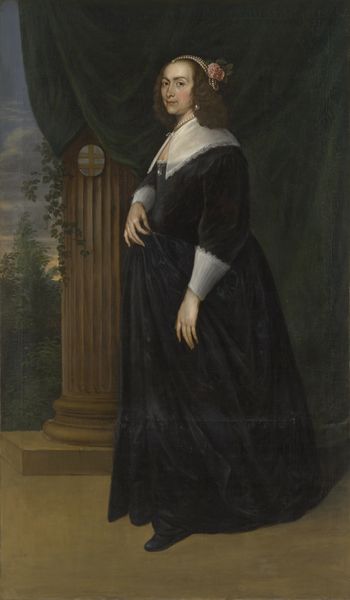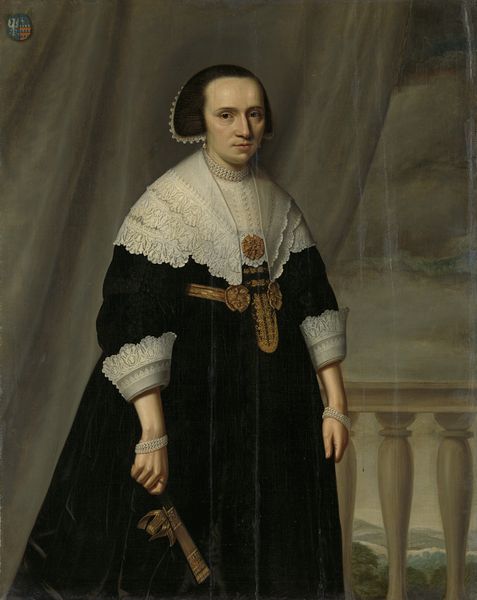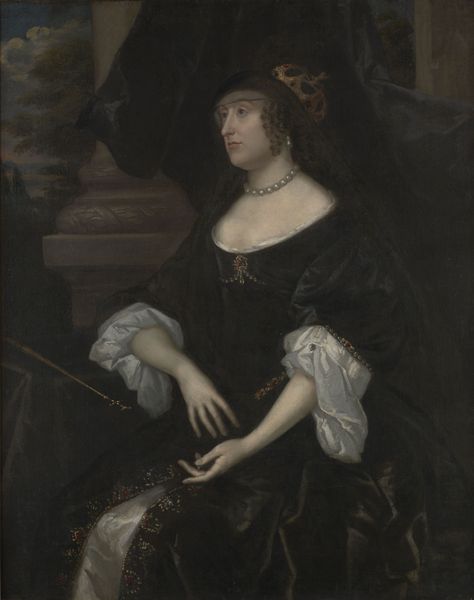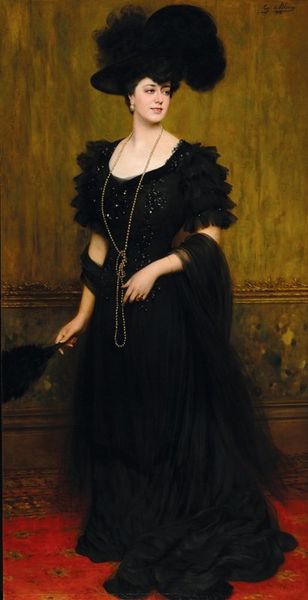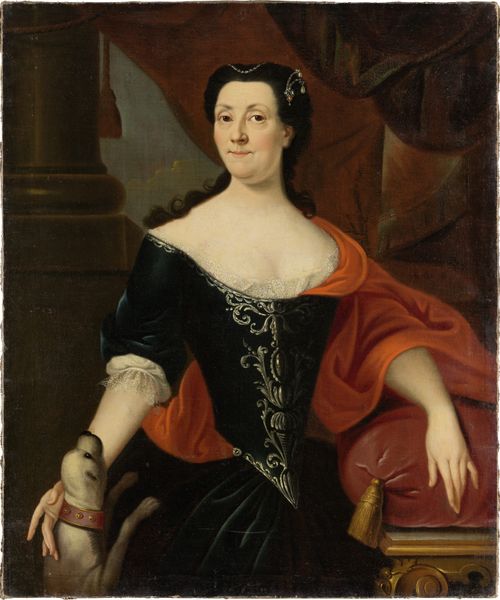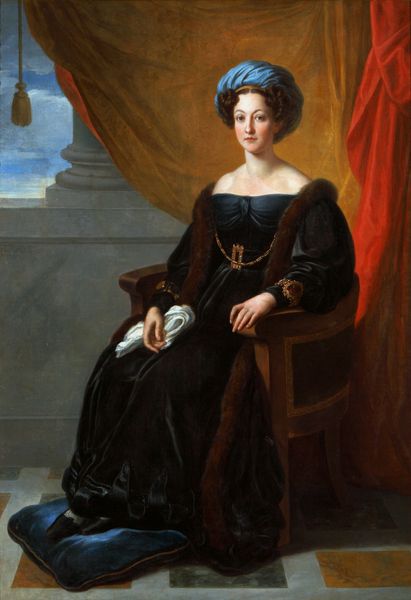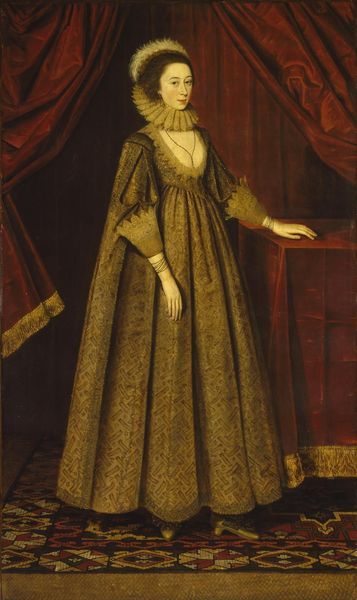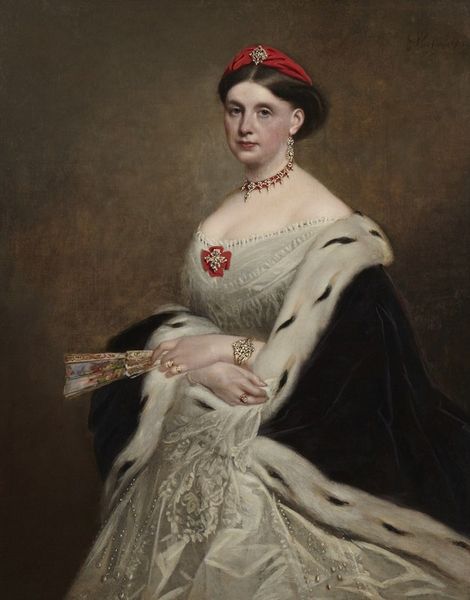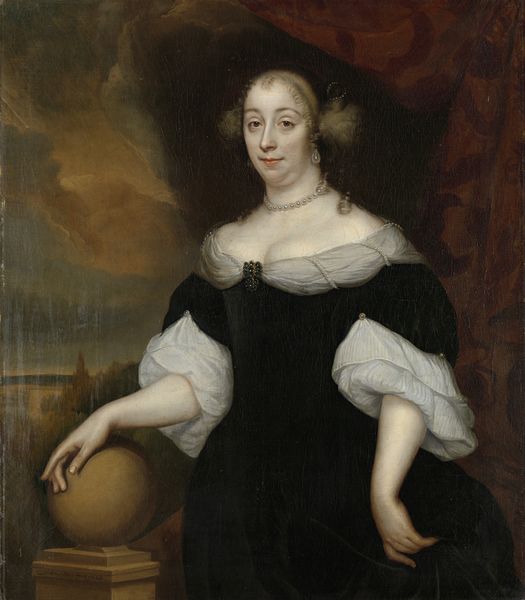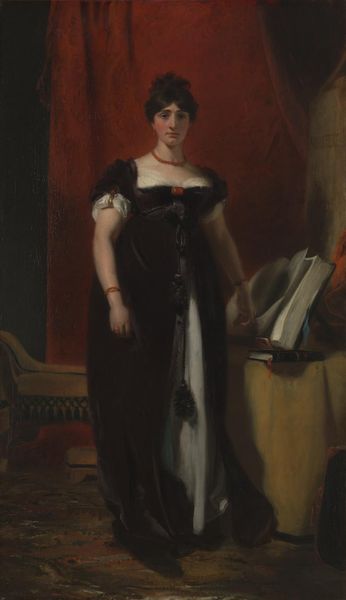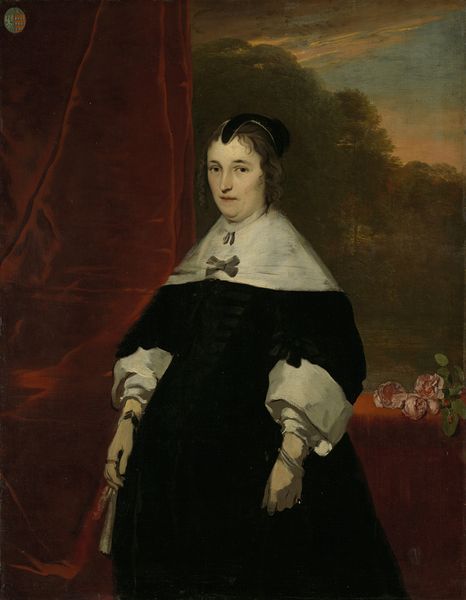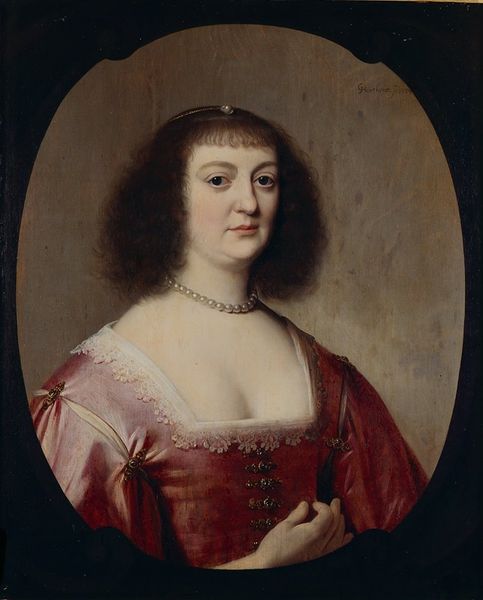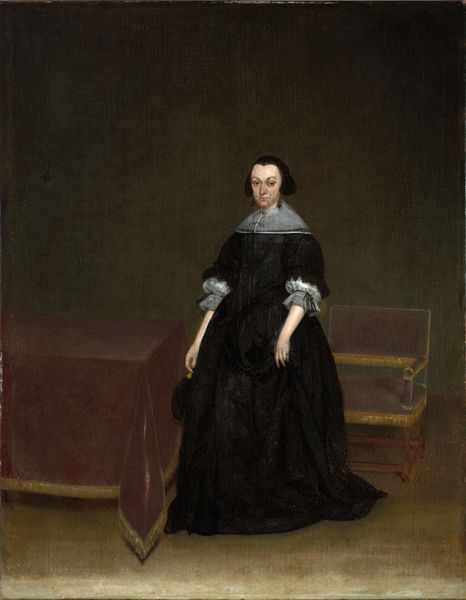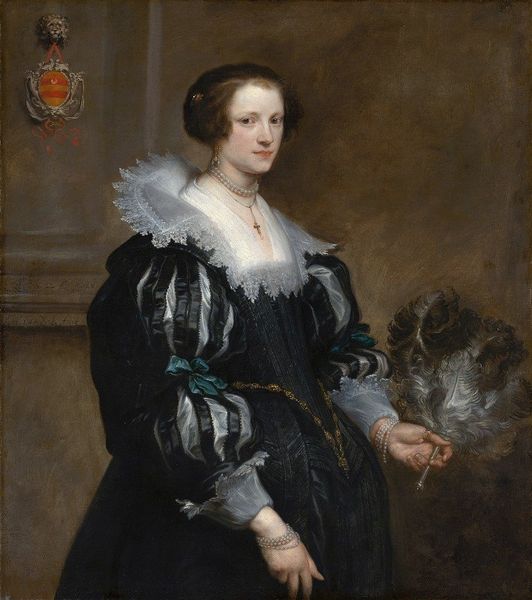
painting, oil-paint
#
portrait
#
figurative
#
baroque
#
painting
#
oil-paint
#
figuration
#
painting painterly
#
genre-painting
#
history-painting
Copyright: Public Domain: Artvee
Curator: It's quite striking, isn't it? This is Gerard van Honthorst's "Portrait of Elizabeth Stuart, Queen of Bohemia," painted around 1630. It's an oil on canvas. Editor: Yes, an immediate sense of... melancholy strikes me. The dark, heavy fabric of her dress, juxtaposed with the almost ethereal lightness of the landscape behind her. Curator: Well, Elizabeth Stuart's life was certainly tinged with tragedy. Known as the "Winter Queen," she was briefly Queen of Bohemia with her husband, Frederick V, before they were deposed, and spent much of her life in exile. Honthorst, in fact, worked in their court in the Hague. Editor: And the pearls...such potent symbols. Tears, of course, but also purity and status. She’s draped in them, yet the overall impression isn’t one of opulent joy. There's a certain sadness conveyed by the accumulation. It almost feels like a burden. Curator: Precisely. The painting speaks to the politics of imagery. She's presented as regal – note the crown and scepter resting on the table – reminding viewers of her royal lineage and claim to a throne, despite her circumstances. The location is perhaps in exile on her husband's mother's home in the Netherlands, Waldeck Castle. Editor: Even the stark contrast between the dark dress and pale skin emphasizes that. It highlights a vulnerability, maybe even a longing for what was lost. You mentioned her claim. I also feel the symbolism of light as something she wants and darkness as the present situation. What a clever strategy for a piece meant to preserve the subject's power. Curator: Portraits like this were crucial for maintaining a royal image and diplomatic ties, particularly for a queen in exile. The display of wealth and status through attire and symbols sent a clear message. Honthorst, having worked previously with the English court, was quite adept at crafting images that served the sitter's political purposes. Editor: Absolutely. Seeing her through this symbolic lens reveals the depth within what could easily be dismissed as just another royal portrait. It's about memory, longing, and a claim to lost power all at once. Curator: I agree. Honthorst’s "Portrait of Elizabeth Stuart" encapsulates not only the queen's individual story but also the larger political and social dynamics of the 17th century. Editor: It also adds extra weight to consider what symbols we put forward when everything is collapsing around us. Food for thought, really.
Comments
No comments
Be the first to comment and join the conversation on the ultimate creative platform.
